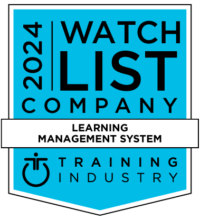Human resources professionals play a vital role in creating and sustaining a culture of safety in the workplace. While some industries and occupations are more dangerous than others, safety culture is important for every work environment. A culture of safety goes beyond the enforcement of rules and policies.
When genuine concern for safety is deeply ingrained in the DNA of an organization, employees aren’t just following rules; they’re actively engaged in making the workplace safer for themselves, their colleagues, and their customers. And, the benefits extend far beyond the mere absence of accidents.
A strong safety culture enhances employee engagement, drives performance, reduces operational risks, and ultimately leads to a healthier bottom line. The human resources team is uniquely positioned to nurture a culture of safety within their organization
Understanding Safety Culture
What does a strong safety culture look like? Why is it important? And what does safety culture have to do with employee performance?
Key Characteristics of a Best-in-Class Safety Culture
Leadership – As with all aspects of an organizational culture, a strong safety culture starts at the top. Organizations with commitment and buy-in from their leadership will have greater success nurturing a culture of safety at all levels of the company.
Communication – Communication is key for developing a top-notch safety culture. In an environment where employees feel free to report concerns, ask questions, and share insights without fear of reprisal, safety thrives.
Accountability – A strong safety culture empowers employees to actively participate in the safety process. It encourages them to take ownership of their safety and the safety of their colleagues. In such an environment, accountability becomes a shared responsibility rather than a top-down directive.
Continuous improvement – Safety culture is not static; it’s an ongoing journey. Organizations with a strong safety culture are committed to continuous improvement. They regularly assess their safety programs, learn from incidents, and adapt to changing circumstances, ensuring that safety remains a dynamic and evolving process.
The Impact of Safety Culture on Employee Engagement and Performance
The influence of a well-established safety culture extends far beyond accident and injury reduction. It significantly impacts both employee engagement and performance. A positive safety culture fosters high levels of employee engagement.
When workers feel that their safety is genuinely valued, they become more committed and motivated. They take pride in contributing to a safe workplace, which, in turn, enhances their overall job satisfaction. Engaged and motivated employees are more productive and less prone to errors. They also have a heightened awareness of potential risks, leading to improved decision-making, higher-quality work, and increased operational efficiency.
Safety is not just good for your people; it’s also good for your bottom line. The Occupational Safety and Health Administration (OSHA) has developed a calculator for estimating the cost of occupational injuries and illnesses and their impact on profits.
The Role of HR and Training in Shaping Safety Culture
From recruitment and training to professional development and ongoing reporting, human resources and training departments play a pivotal role in shaping a culture of safety at their organizations.
Recruitment and Hiring: The process of shaping a strong safety culture begins at the very first step—recruitment. HR professionals can integrate safety into the hiring process by identifying candidates who not only possess the required skills but also align with the organization’s safety values. They should assess applicants for their safety mindset, understanding of safety protocols, and their willingness to adhere to safety standards.
Training and Development: Training and development programs are the lifeblood of a best-in-class safety culture. HR and their training counterparts design, implement, and oversee safety training initiatives to ensure that employees receive the knowledge and skills necessary to perform their tasks safely. Regular safety training sessions not only educate employees on safety procedures but also reinforce the organization’s commitment to their well-being.
Communication and Engagement: Open and transparent communication is a fundamental pillar of a robust safety culture. HR functions as the bridge between management and employees, facilitating the exchange of safety-related information. HR professionals also play a crucial role in fostering a culture of trust, where employees feel comfortable reporting safety concerns without fear of retribution.
Policy Development and Enforcement: HR professionals take the lead when it comes to developing the plans and policies designed to keep their employees safe. These might include day-to-day standard operating procedures, emergency response plans, violence prevention plans, working with experts and law enforcement when appropriate.
Monitoring and Reporting: By monitoring safety performance and reporting on key safety indicators, HR can identify trends, assess the effectiveness of safety initiatives, and make data-driven recommendations for improvements. Timely reporting of safety incidents enables proactive measures to prevent similar incidents in the future.
Leadership’s Role in Safety Culture
As mentioned above, a strong safety culture depends on the participation and support of organizational leadership. While everyone in the organization shares responsibility for safety, leaders set the tone and provide the direction for the entire workforce. When leaders prioritize safety, it sends a powerful message throughout the organization, emphasizing that safety is not just a goal but a core value.
This also means allocating the necessary resources to ensure that their commitment to safety is not mere lip service. This includes investing in safety training, providing adequate safety gear, and regularly evaluating and updating safety procedures.
Challenges and Barriers
Fostering a best-in-class safety culture is not without its challenges. Many companies do not have a designated safety officer, and many HR professionals do not have formal safety training. People often resist change, and implementing new safety practices or procedures can face resistance from employees who are comfortable with the status quo.
Insufficient funding or resources for safety training, equipment, and programs can hinder the development of a robust safety culture. Organizational silos, poor internal communications, and inconsistent policies can lead to a patchwork of different safety protocols or lack thereof. These challenges underscore the importance of involved leadership and the commitment of various stakeholders – not just HR and training professionals – to establish an effective safety culture.
Promoting a Culture of Continuous Improvement
Creating and nurturing a culture of safety is not a one-time task. In order for a commitment to safety to truly permeate your organizational culture, you must acknowledge that it will be an ongoing process of continuous improvement.
Provide training and professional development opportunities related to safety topics on an ongoing basis. Set clear goals, objectives, and expectations, so it will be easy to measure your organization’s performance and progress toward a more safe workplace. And, regularly review your safety policies and procedures to ensure that they serve the needs of your workforce.
Our sincere gratitude to Emma Wright, Outreach Manager, and the entire team of ROAR for the authorship and contribution of this article. ROAR started in 2014 by empowering women with one of the first safety devices built as a fashionable and wearable alternative to self-defense tools. ROAR became a market leader in 2017 with sales in over 45 countries. To learn more about ROAR, visit roarforgood.com.
| Our sincere gratitude to Emma Wright, Outreach Manager, and the entire team of ROAR for the authorship and contribution of this article. ROAR started in 2014 by empowering women with one of the first safety devices built as a fashionable and wearable alternative to self-defense tools. ROAR became a market leader in 2017 with sales in over 45 countries. To learn more about ROAR, visit roarforgood.com. |







